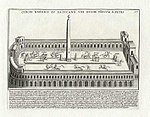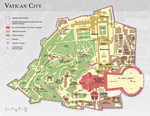Collegio Teutonico
1399 establishmentsCatholic Church in AustriaCatholic Church in GermanyCommons category link is locally definedEducational institutions established in the 14th century ... and 4 more
Properties of the Holy SeeRoman CollegesSource attributionUniversities and colleges in Rome

The Collegio Teutonico (German College), historically often referred to by its Latin name Collegium Germanicum, is one of the Pontifical Colleges of Rome. The German College is the Pontifical College established for future ecclesiastics of German nationality. It is divided into two separate colleges; the Pontificio Collegio Teutonico di S. Maria dell’ Anima and the Collegio Teutonico del Campo Santo.
Excerpt from the Wikipedia article Collegio Teutonico (License: CC BY-SA 3.0, Authors, Images).Collegio Teutonico
Roman Protomartyrs Square,
Geographical coordinates (GPS) Address Nearby Places Show on map
Geographical coordinates (GPS)
| Latitude | Longitude |
|---|---|
| N 41.901388888889 ° | E 12.454444444444 ° |
Address
Piazza dei Protomartiri Romani
Roman Protomartyrs Square
, Vatican City
Vatican City
Open on Google Maps










